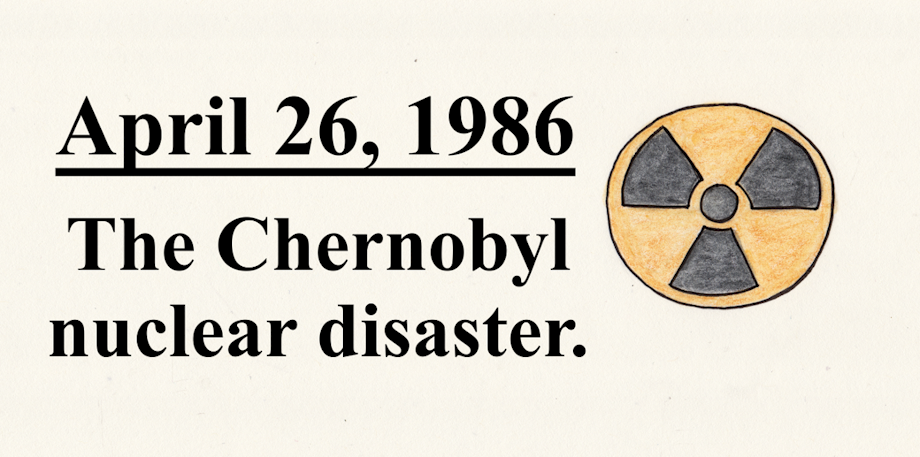On April 26, 1986, the nuclear power plant at Chernobyl, Ukraine (then part of the Soviet Union), suffers a catastrophic failure. A stress-test of the reactor's safety systems combined with operator failures and design flaws resulted in a steam explosion and graphite fire, both of which resulted in the spread of nuclear materials across the region. While most of the fires were soon put out, the fire in Reactor 4 would continue burning for several more days, spreading more radioactive material into the air. The accident also caused the evacuation of the 53,000 person population of the neighboring city of Pripyat the following day. The evacuation was initially planned to only last three days but was later made a permanent evacuation. Evacuees, expecting to return shortly, left behind most of their belongings, remaining where they were left that fateful day.
The impact and devastation of the Chernobyl disaster could have been much worse if not for the actions of a select group of men and women. The Chernobyl liquidators are/were the valiant responders to the disaster who risked their own health and lives in struggle to contain and clean up the aftermath of the disaster. This includes but is not limited to the reactor personnel at the time of the disaster, the firefighters who were the first to respond immediately after the disaster (and many of whom would die over the following days due to acute radiation poisoning), police and military who worked to remove and dispose of contaminated materials, female janitors who disposed of food in the abandoned homes to prevent a possible disease outbreak, photographers who went into the contaminated areas to document the disaster, and coal miners who constructed a protective foundation to prevent contamination of the local aquifer. 600,000 people where issued certificates recognizing them as liquidators. Numbers of casualties among the liquidators are hard to measure due to such factors as the dissolution of the Soviet Union and a reluctance to release information about or seriously study the impact of disaster among the liquidators and any estimates remain highly controversial; however, estimates for total deaths due to the disaster range as high as 93,000.
Chernobyl's Reactor 3 was shut down in 1991 following a fire in the turbine which irreparably damaged the reactor. Reactor 1 was shut down in 1996 as part of an international agreement. Reactor 3, the last still in operation, was finally shut down in 2000, officially shutting down the plant. The entire sight has since been sealed within a structure designed to contain any radiation leakage while also allowing the remote deconstruction the facility. The area within a 19 mile radius of the plant remains an exclusion zone, though a number of Ukrainians who refused to leave continue to live there. The area has been largely been reclaimed by nature and has become a haven for wildlife due to the lack of competition from humans. In recent years, the zone has been opened for tourism and has become an attraction for those wish to learn more about the disaster and/or see it lasting impact on the region.
Details
Published:
6 years, 3 months ago
27 Apr 2019 04:27 CEST
Initial: bb027e0ca7bc13a3fb73168eac121168
Full Size: 8a87a402fb48da031938e7076bdd1d3c
Large: 47d741b4bb7a9e257d42e8bdc9072b30
Small: a10dee0a5c87ce265dc672770c25743e
Stats
29 views
6 favorites
5 comments
